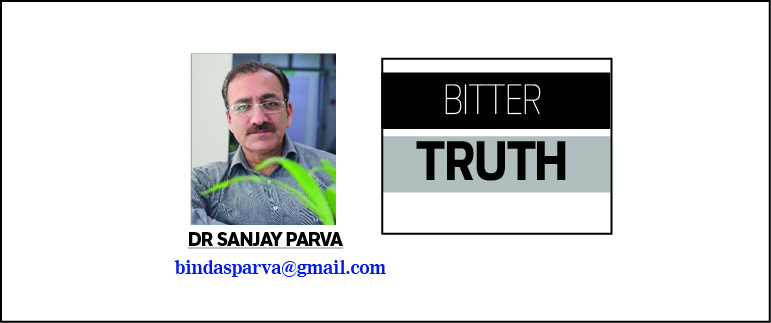By: M. Akram Rahi
In today’s rapidly evolving world, ensuring the safety and protection of children in educational institutions has become a vital concern for educators, administrators, and policymakers alike. Schools, which are supposed to be safe havens for learning and growth, often face challenges related to child safety — be it physical, emotional, or psychological.
Child protection in schools has become an urgent and non-negotiable necessity in the wake of rising incidents of child abuse, exploitation, and mental health concerns. The School Safety Program, an initiative supported by government agencies and child welfare organizations like UNICEF and Save the Children, aims to make educational institutions secure and supportive spaces for children. However, its effective implementation requires a multi-pronged approach, with a special focus on gender-sensitive staffing.
Why Child Protection in Schools Matters
Schools are not just centers of learning—they are second homes where children spend a significant portion of their day. A child-friendly and protective environment is critical to ensure their physical, emotional, and psychological development. Unfortunately, many children continue to face bullying, corporal punishment, sexual harassment, or neglect in schools, either from peers or from adults who are supposed to care for them.
To address these issues, the School Safety Program emphasizes the importance of setting up Child Protection Committees, conducting regular awareness sessions, training teachers on child rights, and enforcing strict guidelines for reporting abuse. But one crucial area that demands more attention is the appointment of adequate female staff in schools, particularly in co-educational and all-girls institutions.
The Role of Female Staff in Child Protection
Female teachers and support staff serve as vital emotional anchors for many children, especially girls. Their presence in schools not only offers comfort and security but also encourages young girls to speak openly about issues related to health, hygiene, abuse, or any form of discomfort they face. Unfortunately, in many rural and far-flung areas, the absence of female staff continues to pose a serious challenge to creating a safe environment for girls.
The presence of female staff members can:
Promote openness and trust: Girls are more likely to confide in female teachers when facing issues of harassment or abuse.
Ensure privacy and dignity: Female staff can assist in managing girl-specific hygiene and health needs, especially during menstruation.
Prevent dropouts: When girls feel safe and heard, their retention in schools increases.
Strengthen awareness: Female staff can effectively lead awareness programs on child rights, health education, and personal safety.
Recommendations for Way Forward
- Mandatory Female Representation: Government and education departments must ensure at least one or more female staff members in every school, particularly where girls are enrolled.
- Child Protection Training: All staff—male and female—should receive regular training on child safety norms, POSCO Act provisions, and how to handle sensitive disclosures.
- Safe Reporting Mechanisms: Establishing complaint boxes, child helplines, and regular counseling sessions with trained professionals is essential.
- Monitoring and Accountability: District-level committees must monitor the implementation of child protection guidelines and take swift action on violations.
Why Child Protection in Educational Institutions is Non-Negotiable
- Rising Incidents of Abuse and Violence
Reports of physical, emotional, and sexual abuse in educational Institutions have surged globally. According to a UNESCO study, nearly 246 million children experience violence in and around schools every year. Many cases go unreported due to fear, stigma, or lack of awareness. A structured Child Protection Policy can help identify, prevent, and address such incidents effectively.
- Psychological and Emotional Well-being
Children spend a significant portion of their day in school, making it a critical space for their mental health. Bullying, cyberbullying, and discrimination can lead to anxiety, depression, and even suicidal tendencies. Schools must implement anti-bullying programs, counseling services, and emotional support systems to safeguard students’ mental health.
- Legal and Ethical Responsibility
Governments worldwide have enacted laws to protect children’s rights. The United Nations Convention on the Rights of the Child (UNCRC) mandates that every child has the right to safety and protection from harm. In India, the Protection of Children from Sexual Offences (POCSO) Act, 2012, and the Juvenile Justice (Care and Protection of Children) Act, 2015, emphasize the need for child protection mechanisms in schools. Compliance is not optional—it is a legal and moral obligation.
- Impact on Learning and Development
An unsafe environment hampers a child’s ability to learn. Fear and trauma reduce concentration, academic performance, and social interactions. Schools that prioritize safety see higher attendance rates, better academic outcomes, and improved student confidence.
Key Components of an Effective School Safety and Child Protection Program
- Strict Background Checks for Staff; All school employees, including teachers, bus drivers, and support staff, must undergo thorough background verification to prevent potential predators from gaining access to children.
- Awareness and Training Programs; Students should be educated on good touch vs. bad touch, cyber safety, and how to report abuse.
-Teachers and staff must be trained to recognize signs of abuse, handle disclosures sensitively, and follow reporting protocols.
– Parents should be involved in workshops to understand their role in child protection.
- Safe Infrastructure and Monitoring
– CCTV surveillance in classrooms, corridors, and buses.
– Gender-sensitive facilities and secure washrooms.
– Anti-ragging and anti-bullying committees to address grievances.
- Confidential Reporting Mechanisms
Schools must establish anonymous complaint boxes, helplines, and designated child protection officers to ensure students can report concerns without fear.
- Crisis Response and Support Systems
– Counselors and psychologists should be available for trauma support.
– Collaboration with NGOs and child welfare committees for severe cases.
– Regular safety audits to assess risks and improve policies.
The Role of Parents and the Community; Parents must actively engage with schools, attend safety meetings, and monitor their children’s behavior for signs of distress. Communities should advocate for stronger policies, government support, and public awareness campaigns to keep schools safe.
A Collective Responsibility
Child protection in schools is not the sole responsibility of educators—it is a shared duty of parents, policymakers, and society. A well-implemented School Safety Program with stringent child protection measures can transform educational institutions into havens of security and growth.
It is in this backdrop that the School Safety Program emerges as a crucial initiative, aiming to create secure and inclusive environments for every child.
At the heart of this program lies the concept of Child Protection, which not only deals with preventing abuse, neglect, exploitation, and violence against children but also empowers them to speak out and act against injustices. Recognizing children’s rights and ensuring their implementation in schools is not just a moral responsibility but a legal mandate under the Right to Education Act (RTE) 2009 and the Juvenile Justice Act.
Role of Cultural Education Wing of School Education Department
A vital yet often under recognized player in this domain is the Cultural Education Wing of the School Education Department. This wing plays a transformative role in sensitizing students and educators about child rights and protection through creative mediums such as theatre, music, storytelling, debates, and art-based activities. These tools are effective in reaching children at a deeper emotional level, enabling them to express their fears, experiences, and aspirations in a safe space.
Almost in every district of Kashmir division, especially in District Anantnag, the Cultural Education Wing under the respective Chief Education Officer has pioneered several awareness campaigns, Child Protection and Disaster Management Awareness Sessions in over hundreds of schools. These sessions, conducted in collaboration with UNICEF, Save the Children, Bal Raksha Bharat, District administration Anantnag and local NGOs have had a lasting impact on student awareness and behavior. Cultural performances based on real-life stories of resilience, role-plays on emergency preparedness, and interactive discussions have not only educated children but also instilled confidence and courage in them.
Moreover, such interventions have led to improved teacher-student relationships, encouraged the formation of School Safety Committees, and promoted a culture of mutual respect and alertness. The involvement of Scouts and Guides, peer groups, and trained student leaders has added a participatory layer to the program, enhancing its reach and sustainability.
However, there is still a long way to go. More training programs for teachers, infrastructure safety audits, grievance redressal mechanisms, and collaborations with child rights organizations are needed to institutionalize child protection norms in all educational institutions.
In conclusion, the integration of cultural education with child protection awareness is a forward-thinking and inclusive approach. The Cultural Education Wing, through its innovative and child-friendly methods, has proven that safeguarding children’s rights is not just about policies and punishments but about creating empathetic, aware, and empowered communities within schools.
“Let us commit to making every school a place where every child feels safe, valued, and protected — because protecting children is not just an obligation, it is a promise to our future”.
Investing in child safety today ensures a brighter, healthier future for the next generation. Let us pledge to make every school a place where children are not just educated but also protected, respected, and empowered.





